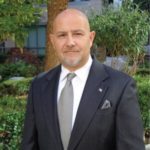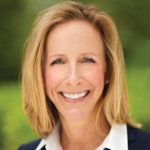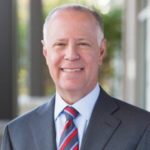
Rita E. Garwood,
Editor in chief ,
Monitor
The state of diversity, equity and inclusion (DE&I) across the equipment finance ecosystem varies dramatically. Andrew Denton, CEO of Alfa, summarizes it well: “The first thing to acknowledge and understand is we’re all on a journey of some kind.”
Begin Where You Are
Every company’s journey starts somewhere. Alfa’s began with its LGBTQ+ community. “We joined the Stonewall Programme, which is a really helpful way for us to understand how much of a safe place Alfa was for somebody who was LGBTQ,” Denton says.
Justin Foster, chief diversity officer at DLL, says before the company officially began its formal DE&I strategy in 2017, passionate employees created member resource groups, including DLL’s Network of Women.
“Half of my senior leadership team are women,” Adam Warner, president of Key Equipment Finance, says. “We also have members of the LGBTQ community in senior leadership roles within Key Equipment Finance (KEF).”
For Amur Equipment Finance and Odessa, both minority-owned companies, diversity and inclusion were embedded into the fabric of the organizations from the start. “Diversity and inclusion are really fundamental to who we are,” Mathew Abraham, COO of Odessa, says. “It starts at the top.”
“Our focus really began with our CEO, Mostafiz ShahMohammed,” David Cramer, IT systems administrator and member of the ELFA Equality Committee, says. “As an immigrant from Bangladesh, [ShahMohammed] started right there at the ground level.”

“Diversity and inclusiveness are part of our DNA,” Allison Long, SVP, Marketing, Brand and Communication at Volvo Financial Services, says. “We have 57 nationalities, approximately 1,600 employees in 50 countries, almost a 50/50 male to female employee ratio, one out of three of our leaders are female, and the average age in VFS is 43.”
For Shawn Smith, CEO/CFO of Dedicated Commercial Recovery, a faith-based collections company, making a commitment to being an equal opportunity employer has led to the creation of a staff from various backgrounds. Smith says a hearing-impaired member of his collections team is a constant source of inspiration.
Lia Wax, VP of Operations Contract Management at Financial Pacific Leasing, says her company approached diversity, equity and inclusion in a more organic manner until it was acquired by Umpqua Bank and a larger D&I framework was created. “It allowed us to see that there was so much more to diversity and inclusion than what we were doing,” Wax says.
Defining Diversity, Equity and Inclusion

Denton and Cramer note that it’s important to define DE&I before trying to roll out a program. “People do get really mixed up with inclusion and diversity,” Denton says. “They’re very different things in different journeys, and equity is so much more important than equality.”
To illustrate the difference between diversity and inclusion, Cramer uses the analogy of playing a sport: “Diversity is who’s on the team and inclusion is who gets to play,” he says.
“If you’re big enough, you’re going to be diverse,” Denton says, adding that it’s vital to “understand that just because the guy in the cubicle next door is Black doesn’t necessarily mean he feels included.”
“Having a diverse workforce isn’t enough,” Wax says. “We also have to give people a seat at the table and encourage them to participate. That’s really when the true potential of a diverse workforce can be realized.”
But you don’t always have to start big, says Abraham. The small actions of leaders that provide employees with greater flexibility can go a long way. “When you’re having a meeting and you bring a bunch of people together, whether it’s leaders or a team, and you have to make an important decision, I think it’s good to take a pause and go around the room to explicitly ask everybody — do they have a concern, do they have an interest, are they in,” Abraham says. “It brings out people who might be less open to discuss or bring up things as easily in a more public setting.”
“When businesses can focus on not only ensuring that their culture encourages diversity, but also that everybody has the opportunity for success and no one is left behind, I think that’s when companies will see a lot of barriers to their growth fall to the wayside,” Cramer says.
Creating an Inclusive Workplace

“Inclusion is inclusion,” Denton says, adding that Alfa has no tolerance for anyone who fails to make the Alfa workplace feel like a safe place in which anyone can bring their real self to work. “We’ve had some of our best and most empowering moments as a culture, as an organization, thanks to inclusion and diversity,” Denton says, recalling a time when an employee shared a very personal journey. “Unless you’re inclusive, nobody’s going to come out and talk about their journeys,” he says.
“Our people have always been our greatest resource. In every speech, in every meeting, we always talk about what our people mean to the company,” Cramer says. “We’re working to create a very culturally diverse and rich workforce. And that focus is on inclusion and the connectedness between people as well as their ability to foster and build strong relationships based upon that teamwork.”
“What it comes down to is that we understand that as an organization, we can be so much more than the simple sum of our parts,” Wax says. “It’s a core piece of our culture. We’ve been able to really see firsthand what happens when you have employees with unique skills and experiences and perspectives and get them all problem solving and thinking about how to create success.”
“Engaging the voice of the employees is very important because what we have found is that having that diverse culture requires everyone,” Abraham says, adding that it is energizing for the team.

“Cultivating diversity and inclusiveness is more than just thinking about it, it’s the way we behave towards each other when we meet and interact with people, both in and outside of work,” Long says. “I experienced it the first day I joined Volvo, which was in 1996, and I feel it every time I visit our markets and offices. It’s how we do things … to respect and include one another, to make people feel welcome and valued. It’s an ‘I belong’ feeling the moment you walk through the office doors.”
“One of the greatest compliments I ever got was a spouse coming up to me at our holiday party and saying, ‘Do you know, in 25 years, I’ve never even seen my spouse like this? He no longer feels like he has to come home and wash off his job. He comes home invigorated and excited, and it is changing our family,’” Smith says.
“Key’s culture encourages employees to bring their full and authentic selves to work,” Adam Warner, president of Key Equipment Finance, says. “Our employees believe it and they do it, ultimately creating better outcomes for our clients and the communities we serve.”
Recruiting, Hiring & Retaining Diverse Talent
Warner acknowledges that KEF must continue its focus on improving diversity within its workforce. “Although we have a strong foundation of diversity, equity and inclusion at Key, we can improve on our legacy. We still need to be proactive in thoughtful recruiting of diverse candidates to build a strong slate of qualified applicants.”

“People can be a company’s greatest strength and competitive edge,” Long says. “The biggest danger many companies face is that we hire or favor the ones that resemble us, creating an environment where people look and act the same. So it takes discipline and a vision for long-term results and daily practice.”
“The United States is the most diverse nation on earth, and our goal is to recruit people, individuals from very diverse backgrounds across the many communities that we serve. We are working to build a workforce which not only represents a diverse workforce, but within which all are represented and have equal opportunities for success,” Cramer says.
To have diversity at the top, Abraham says it starts with building a strong pipeline. “We have our own internal recruitment team,” Abraham says. “We make the effort to go to the local schools when we’re hiring, especially the new college grads. That’s important.” For Odessa, building a workforce that is representative of its community is the key.
“If you want to grow, you have to focus on the opportunities for development,” Warner states. “For example, to improve diversity in our workforce, we need to get involved early and encourage diverse students to consider financial services, banking and equipment finance as viable, aspirational career paths.”
Key Equipment Finance, KeyBank’s Colorado market and the KeyBank Foundation have helped to create two programs at the University of Colorado (CU) Boulder Leeds School of Business with the CU Office of Diversity Affairs: the KeyBank Business Leadership Program and the KeyBank Summer Bridge Program.

The KeyBank Business Leadership Program targets diverse high school juniors and seniors and brings them onto campus to live for one week in the summer.
“Going to a university can be intimidating for some students,” Warner says. “Getting them on campus through the KeyBank Business Leadership Program connects them to faculty, staff and peers, and shows them they have avenues and alliances at the school.”
The KeyBank Summer Bridge Program prepares students from underrepresented, first-generation and low-income backgrounds who may not meet the ACT/SAT and/or GPA requirements set by the school to be successful by creating academic, professional and social programming during an intensive three weeks at the university.
“They learn and meet people that may have more in common with them, and they stay longer because of these connections,” Warner says. “The goal is not only to attract diverse students but to also have them graduate and find jobs.”
Warner hopes the programs with CU Boulder also will help students become interested in coming to work for Key Equipment Finance or KeyBank. All companies, he says, should make attracting and retaining diverse talent a priority if they want the diversity of thought that brings many benefits to an organization.

“I would encourage organizations to consider how they compensate each demographic within the organization, looking for possible discrepancies, as well as what opportunities are available to their employees to ensure they’re cultivating a fair and equitable environment and process for everybody,” Wax says.
The second key to retention, according to Wax, is providing opportunities for mentorship. “It can be challenging to navigate the corporate world when you are part of a particular group,” Wax says. “Having someone that is of that same group that has been successful providing guidance and suggestions can have a huge impact on how a person feels in the workplace, and how well they can progress in the workplace.”
“My fear is that that takes a heart change and a spirit change, not just a money or a policy or procedure change for [retention efforts] to be authentic and real,” Smith says. “You’re going to watch companies fail and the best talent go to the places that truly and authentically get this.”
Abraham suggests looking at leadership and asking challenging questions such as, “Do we have representation, and do we have a strong pipeline?” Abraham says it goes beyond checking a box, that you must consider diverse leadership in the context of their sphere of influence, too. Embracing diversity in leadership needs to include support infrastructure to help them thrive as thought leaders, as strategic contributors and as trusted advisors.
Creating Internal Programs

For many companies, the first formal step toward creating a DE&I program involves creating internal resource groups. Wax says these groups allow employees to “feel that they are being included from a company level” but also have an outlet in which to spend time with other colleagues who are like them.
Alfa has three inclusion communities — LGBTQ+, women and racial equity — that were started by employees and have a sponsor from the leadership team. Denton says each community meets regularly and has a budget to plan events, such as a Juneteenth celebration or a stall at London Pride.
Amur employees created a DE&I leadership committee, which Cramer says is comprised of volunteers from each department who are passionate about making the company’s culture and opportunities inclusive for all.
In addition to DLL’s various member resource groups, the company also founded an Executive Inclusion Council in 2019, a cross section of senior leaders from across the globe co-chaired by CEO Bill Stephenson and U.S. General Manager Eileen Schoonmaker. “These leaders in our organization help drive the DE&I strategy for the organization,” Foster says. “They’re the ones that are helping to carry the message to set strategy, to set direction and really hold the rest of the team accountable.”
Understanding the Why
Over the last three years, DLL has evolved its DE&I strategy. “It was grassroots to start, and we put some structure around it,” Foster says. “And then recently, with me coming into the chief diversity & inclusion officer role, I’ve re-imagined, rethought through, ‘What do we want to focus on?’”
Foster says he is fortunate to be building on a strong foundation of executive-level support at DLL, adding that leadership accountability and the right structure are also essential for creating a successful DE&I program. Foster suggests executive leadership should begin by asking why the program is important. When leadership finds the differentiator for their company, they also will discover the unique “why” for their organization. “Then make sure that you can embed that vision into the organizational culture,” Foster says before adding an important reminder: “This is not a sprint. This is a culture change, and with any culture change, it’s a multi-year journey.”
Once leadership is on board, training your team about DE&I is vital.
“Training can be done from the top down,” Denton says, adding that everybody can get something from inclusion training, particularly the topic of microaggressions. “What’s important here is not just the big-ticket stuff, it’s all the tiny little paper cuts that make people just lower their head a little bit more and don’t bring their best selves to work.”
“We are always continuing to educate and inform our workforce, and bring them together through different activities,” Long says. “We have a Diversity & Inclusiveness week, which is a celebration of our culture and employees. We also provide trainings and special webinars on specific topics of D&I interest that employees can attend.”
In addition to annual diversity training, Wax says Umpqua Bank created a series of monthly “Diversity Dialogues,” featuring a short article or video. “Anybody could join the dialogues and really have a good conversation in a safe space about how this stuff made them feel and what it made them think about,” Wax says.
Supporting the Community
Another important aspect of DE&I is supporting the community by participating in organizations or through volunteerism.
Smith says that Dedicated is the only debt collector in the Social Enterprise Alliance, a group of organizations that address a basic unmet need to solve a social or environmental problem through a market-driven approach. “We’re really focused on moving the ball forward in removing unconscious bias, even in the hiring and in the corporate structure,” he says.
One of the five pillars of DLL’s DE&I strategy is “Strengthening Our Communities,” which Foster says drives empathy through volunteerism and community outreach. “We have a long history at DLL of supporting our communities globally,” Foster says. “This pillar really ties together our corporate social responsibility strategy and our diversity and inclusion strategy.”
Wax notes that Financial Pacific gives its associates 40 additional paid hours a year to volunteer in the community, which can be used to support DE&I initiatives.
Alfa supports the Black British Network, which focuses on the economic empowerment of the Black community, as well as the Women’s Network, which Denton calls an almost intersectional group focused on empowering young women from disenfranchised backgrounds. As part of the program, Denton has taken on a mentee.
Looking Outside the Industry
If a company is unsure about how to begin focusing on diversity, equity and inclusion, Foster suggests looking outside the industry at the DE&I reports of publicly traded companies, which can help leaders understand and measure their own progress. “How are you moving the needle? And even, year over year, how is your strategy really impacting your representation numbers in your organization?” Foster says.
Cramer says SAP, which has an Autism at Work program, and FIS Global, which was named a Great Place to Work for the LGTBQ+ community, have fantastic programs. Wax points to Kaiser Permanente as a leader that hires people that are representative of the communities that the company serves.
No matter where you are in your DE&I journey, the first step is acknowledging the truth, accepting it and taking action. “Get involved and use your corporate voice to amplify,” Denton says. “We can actually shine a spotlight on some of these [issues] that matter. We will only cure institutional and societal racism, for instance, if we engage with the white corporate community. That’s the only way that it’s really going to work, and we can effect the change.” •
Rita E. Garwood is editor in chief of Monitor.
No categories available